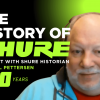What is the light field?
The light field is a core concept in imaging science, representing fundamentally more powerful data than that captured in regular images. The light field fully defines the visual content of a scene. It is the amount of light traveling in every direction through every point in space – it’s all the individual light rays in a scene.
Conventional cameras cannot record the light field. Conventional images tell very little about the light passing through the lens of a traditional camera. Conventional cameras tell only the sum total of light rays striking each point in the image. To make an analogy with a music-recording studio, taking a conventional photograph is like recording all the musicians playing together in one audio track, rather than recording each instrument separately (which provides maximum flexibility when mixing the final song). Many problems that photographers face, like accurate focus, are directly attributed to this missing information.
Concepts related to the light field have been researched in academic circles for over a century. Seminal research in the 1990s by two Stanford University professors, Pat Hanarahan and Marc Levoy, brought light fields to the fore. These two professors were Ren Ng’s thesis advisors, and Dr. Ng’s award-winning dissertation forms the foundation of Lytro’s light field camera technology.
How does a light field camera capture the light rays?
In the late 1990s, light fields were captured in the lab by Stanford’s Dr. Bennet Wilburn, a former Lytro employee, who designed and built a roomful of a hundred cameras tethered to a supercomputer. The cameras captured a hundred images with corresponding focal points in unison, and software combined them into a light field.
Dr. Ng’s innovation was to take the light field out of the lab, miniaturizing light field capture into the body of a single camera to make it practical for everyday use. The key hardware change is an innovative light field sensor that replaces the regular image sensor in a conventional camera. The light field sensor captures the color, intensity and direction of a dense sampling of the rays of light flowing into the camera. The directional information is completely lost with traditional camera sensors, which simply add up all the light rays at each pixel and record them as a single amount of light. Instead, a light field sensor captures millions of light rays, or, in other words, megarays.
How does light field technology make use of the additional information?
Light field processing happens through a unique software light field engine. This engine models and extends the physical process of image formation in software, allowing us to break through physical limits of regular cameras, introducing new capabilities that were never before possible. The light field engine includes sophisticated algorithms that use the full light field to unleash new ways to make and view pictures.
Relying on software rather than hardware components can improve performance, from increased speed of picture taking to the potential for capturing better pictures in low light. It also creates new opportunities to innovate on camera lenses, controls, and design.
The light field engine powers all uses of light field photos, from the desktop to the web to mobile phones. The light field engine processes the extra dimensions and richness of light field data, creating interactive opportunities for picture taker and picture viewers.
How are light field pictures different?
The way we communicate visually is evolving rapidly, and people’s expectations are changing in lockstep. Light field cameras offer astonishing capabilities. They allow both the picture taker and the viewer to refocus pictures after they’re snapped, to re-orient the scene by shifting the perspective view, and even to switch between 2D and 3D views. With these kinds of amazing capabilities, pictures become immersive, interactive visual stories that were never before possible – they become living pictures.
Living pictures can be enjoyed by everyone who sees them online without needing special software. They can be shared online. The light field engine works behind the scenes so enjoyment and creativity can flourish. Wherever people want to view, play with, and share living pictures, they can.
[Source: LYTRO]





























